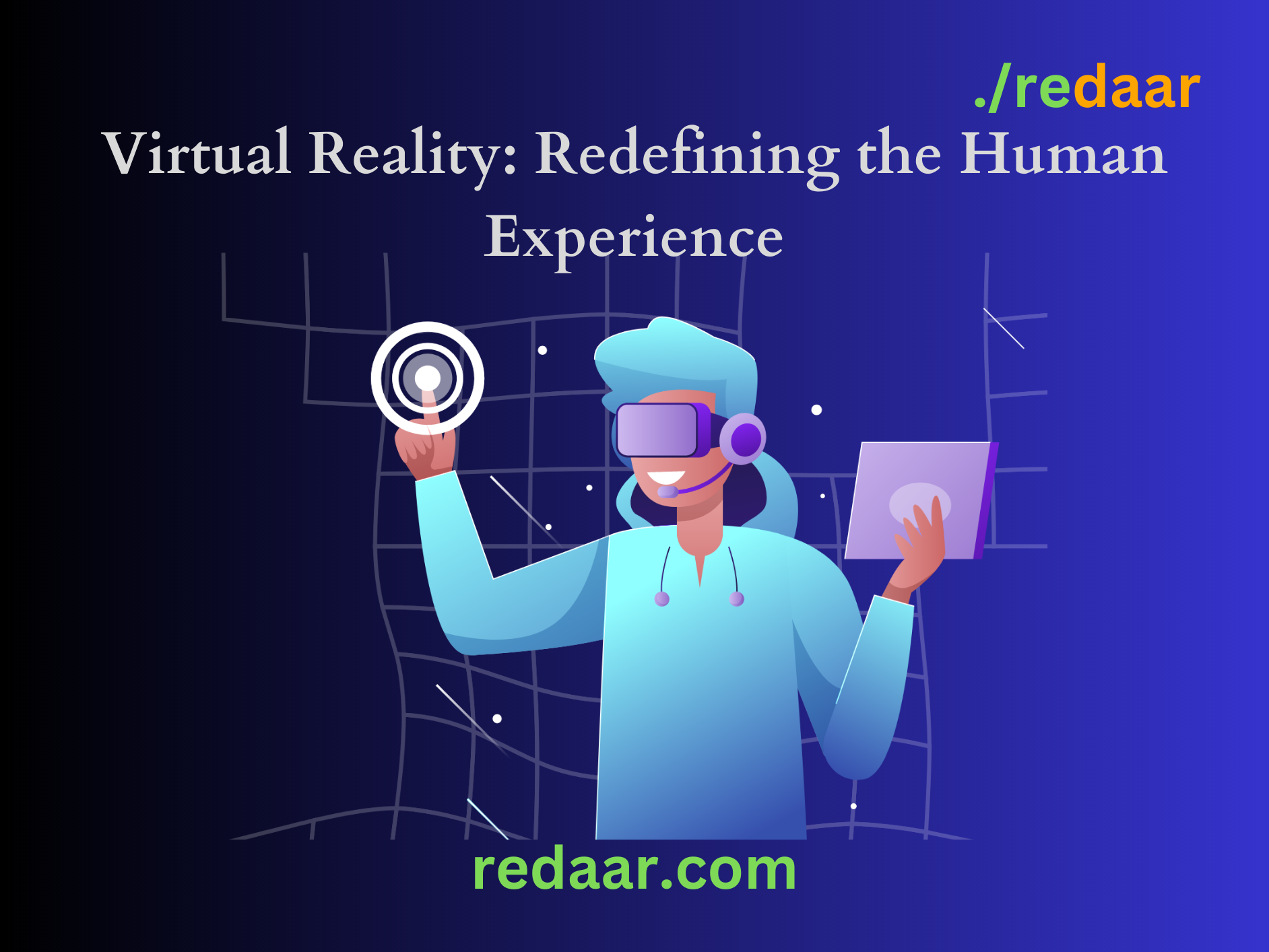Virtual reality (VR) was once only a pipe dream, a concept reserved for science fiction. It is now evidence of humanity’s never-ending quest for innovation, opening doors to countless opportunities. Virtual reality is more than a technological achievement; it is a vast universe full of creative possibilities and unique experiences that are just waiting to be discovered.
This article will walk you through the definition of virtual reality, its advancements, ethical considerations, and future.
What is Virtual reality?
Virtual reality is an immersive technology that immerses users in computer-generated settings while engaging their senses and giving them a sense of presence. With early ancestors like the stereoscope, the idea may be traced back to the 19th century. The technology did not, however, advance quickly enough to support the concept until the late 20th century.
The renowned “Sensorama,” created by Morton Heilig in the 1960s, provided a multisensory experience with 3D graphics, stereo sound, and even scents, establishing the groundwork for contemporary virtual reality. The virtual reality industry has changed dramatically in the twenty-first century, with to developments in computing power, display technology, and motion tracking systems.
Virtual Reality in the Real World
Although virtual reality continues to be most often used for gaming, its promise goes well beyond amusement. Virtual reality opens the way to a ground-breaking educational experience. Education is made interactive and interesting by allowing students to investigate ancient civilizations, the human body, or watch historical events take place in front of their eyes.
VR is being used in therapy for patients with anxiety, phobias, and post-traumatic stress disorders in the healthcare industry. VR simulations help surgeons rehearse difficult procedures, lowering the margin for mistakes and enhancing patient outcomes.
Virtual reality is used in design simulations, online meetings, and other business-related applications. Regardless of distance, professionals may collaborate easily, promoting productivity and innovation. But do not confuse virtual reality with augmented reality.
Difference between Virtual Reality and Augmented Reality
While both virtual reality (VR) and augmented reality (AR), two separate technologies, provide immersive experiences, their methods, and uses are different:
- VR immerses people in a virtual environment that is entirely computer-generated, cutting them off from the outside world. It is frequently utilized in simulations and games and calls for specialized headsets.
- AR enhances the user’s impression of reality by superimposing computer-generated content over the real world. Using smartphones, tablets, or augmented reality (AR) glasses, users can concurrently interact with real and virtual objects. Navigation, education, shopping, and industrial training are among the areas where AR is used.
Limitless Virtual Reality
The potential of virtual reality to expand the parameters of human experience is one of its most exciting features. With VR, people may transcend their physical constraints and travel to locations they could only imagine. Imagine exploring a magical world, marveling at the wonders of outer space, or swimming with majestic whales in the depths of the ocean.
Additionally, VR has the potential to question societal conventions by letting users see the world from various angles. By literally putting people in the shoes of someone else, whether they be someone with a disability, someone from a different cultural background, or even an endangered species, it has the potential to promote empathy and understanding.
Virtual Reality Ethical Considerations and Challenges
Virtual reality offers a world of wonder but also brings up moral dilemmas. There are concerns regarding the effects of spending too much time in a virtual environment as the distinctions between the real and virtual worlds become more hazy. The risks of addiction, dissociation, and desensitization should all be carefully considered.
Furthermore, security and privacy must be given top priority in VR technologies. Users’ biometric information and behavioral patterns must be collected and stored, and strict security steps must be taken to prevent misuse.
The Future of Virtual Reality
The potential of virtual reality seems limitless as we advance farther into the twenty-first century. A new era of interconnected experiences is ushered in by the convergence of VR with other cutting-edge technologies like artificial intelligence, augmented reality, and brain-computer interfaces.
The development of full-dive VR, which is where the user’s consciousness is completely immersed in the virtual environment, is still a distant but alluring vision for the future. This concept was made popular in science fiction. Unquestionably, such a discovery would transform entertainment, communication, and even awareness itself.
The pinnacle of humanity’s relentless pursuit of creativity and innovation is virtual reality. It provides a key to opening up a universe of engaging experiences, connecting the physical and digital worlds in ways that were once considered to be impossible.
Technology will revolutionize how we study, play, interact, and comprehend the world around us as it continues to develop. Virtual reality is still in its infancy, and with each step ahead, we set out on a brand-new journey that pushes the limits of human understanding and creativity. Be a part of this journey by keeping up to date through our latest blogs.

